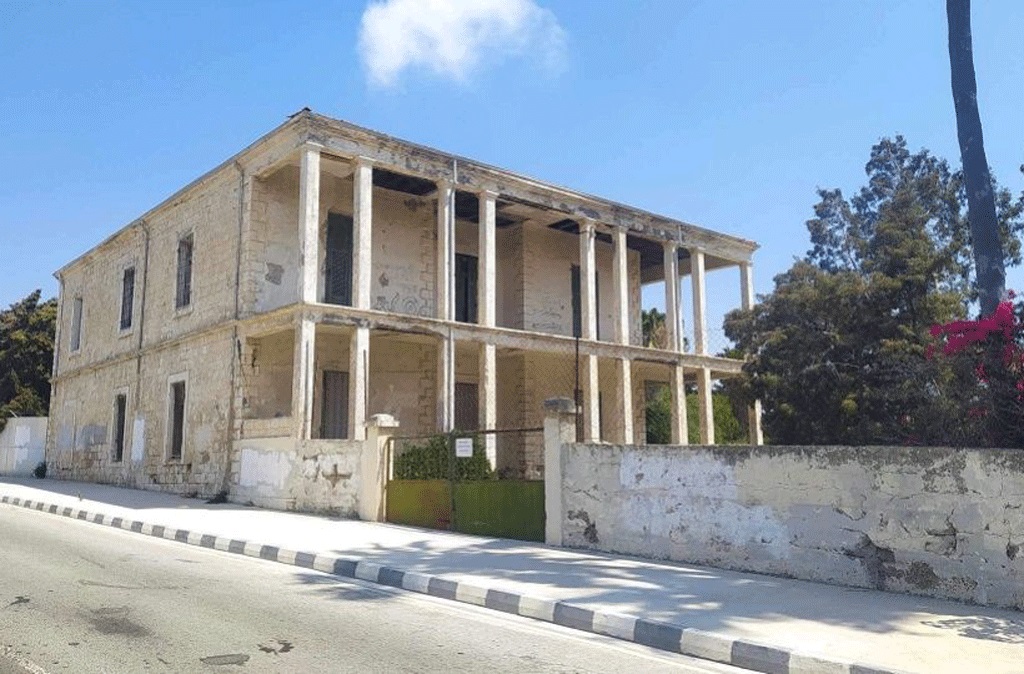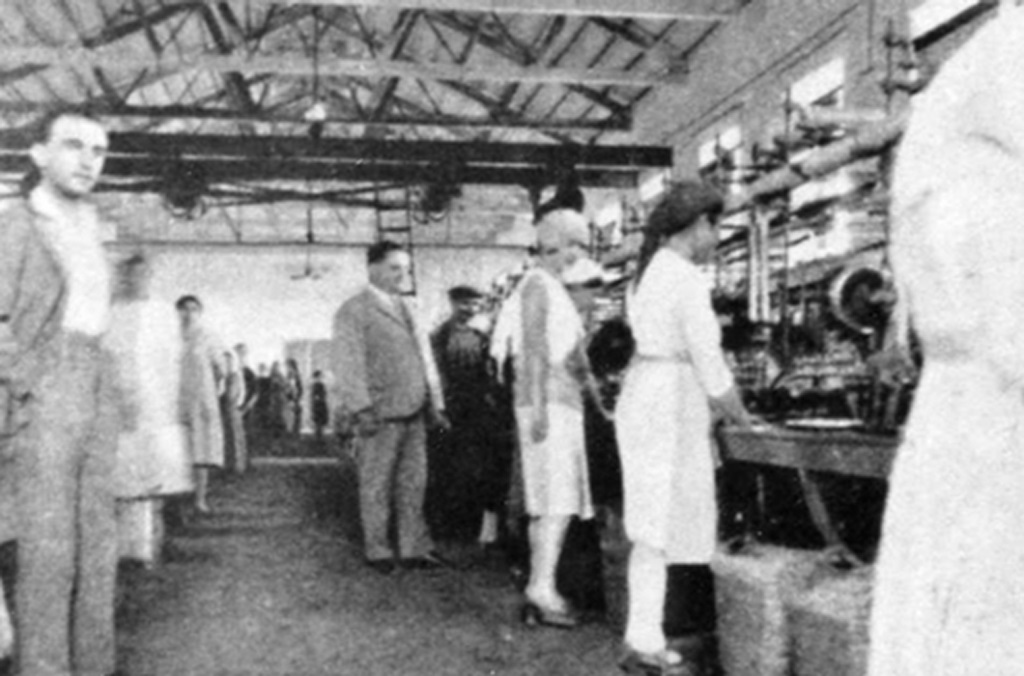Filenews 11 March 2024 - by Dora Christodoulou
With the exception of the older residents of Geroskipou and the Pafos district in general, few people know about the silk mill that operated in today's municipality at the beginning of the 20th century.
Everyone knows the old Paphos KEN, located in the centre of Geroskipou. And yet, the reason is the same thing, since the operation of the impressive in volume building complex, which operated until relatively recently as a KEN, was preceded by its operation as the only silk mill in the Pafos district. And, indeed, as the only industrial center in Cyprus that manufactured parachutes for the needs of the Allies in World War II.
Today, this unknown aspect of the otherwise well-known old Pafos KEN is back in the news. On the one hand, the sale of the site by the owner bank to the Municipality of Geroskipou and, on the other hand, the upcoming municipal and regional elections, have put the issue of highlighting and utilizing the historical site on the daily agenda of Geroskipou's issues. Many voices that are already being heard, ask for the connection of the site with the past of the area and the silk mill is considered as a more indicative case of this connection.

Speaking to "F", the municipal councillor of Geroskipou, Andreas Christofides, points out that in 1926 the Metaxourgeio Geroskipou ("The Cyprus Silk Filature Ltd") began its operation, which was built by an English company and operated smoothly as such until 1934. At that time, most of it was sold to Cypriot businessman N.K. Lanitis and renamed Paphos Industries Ltd, he says. It reopened as a silk mill in 1940, with the beginning of World War II for parachute manufacturing, only to close permanently in 1952.
For years it employed a large number of workers from Geroskipou and the surrounding villages and was the main economic pole of development in the area, along with the Gerokipia Farm, but also a milestone in the industrial production of Cyprus, he stresses.
In 1961, according to Andreas Christofides, the community of Geroskipou asked the state to create a Vocational School on the premises of the former silk mill, aiming at the technical and vocational education of the young people of the region, only for the Republic of Cyprus to come to requisition it and create in 1964 the Geroskipou KEN, which for four decades trained thousands of new recruits.

Mr. Christofides mentions that after the KEN moved to the village of Anarita at the end of the 20th century. and while the State had the moral obligation to ensure the return of the land to the municipality as a compensatory benefit, the land passed back into the hands of the owner company, the former Laiki Bank and now, after what happened in 2013, to the ownership of the Bank of Cyprus. 2004, he stresses, was a landmark year for the preservation of the architectural and cultural heritage of the site: Following a proposal by the Municipality of Geroskipou, the entire plot, with a total area of 26757 square meters, was declared "preservable" (decree KDP 75/2004).
At the same time, the owner company was planning a large residential and commercial development and the municipality claimed and achieved, through the issuance of the planning permit, the granting of significant compensatory benefits. The planning permission was issued in 2012, but the planning remained on paper due to the financial crisis of 2013 and the subsequent merger of Laiki and Bank of Cyprus.
For more than 20 years, according to the municipal councillor Geroskipou, buildings and open spaces have presented a picture of abandonment and desolation. This intensified the pressure and eventually led to an agreement with the Bank of Cyprus for the acquisition of the important space for its development and promotion, he points out.
Proposal for the creation of a Silk Centre
The then silk mill was also the subject of a postgraduate thesis since 2014. The postgraduate student of the Aristotle University of Thessaloniki, Paraskevi Spanoudi, wrote the thesis entitled: "Study for the restoration and reuse of the old silk mill of Geroskipou in Cyprus".
She writes specifically in her postgraduate thesis: "The old silk mill of Geroskipou includes more than eleven stone-built buildings of industrial architecture. Most of them were built at the same time in 1926, when Cyprus was under British rule. Metaxourgeio, which was the largest industrial unit in the Pafos district and one of the most organized in Cyprus during the British occupation, operated until 1952.
As a new use, the creation of a Silk Center is proposed, i.e. a complex with a multifunctional role. It will include production areas and at the same time will host uses that will appeal to both the public user and permanent users. Specifically, it will include the following areas:
Areas of production and processing of silk with modern methods and machinery. Places for teaching the history of silk production and modern know-how on it. Accommodation areas for silk industry students and catering areas. Places that appeal to the public such as a silk museum, an amphitheater and a cafeteria. The aim is to create a place where the tradition of silk art will be kept alive, its revival and dissemination. The basic idea that organizes the overall space of the complex is the idea of weaving. This idea is translated by projection on the floor plan and elevation, the concept of warp and weft. That is, vertical and horizontal elements that intersect like woven.
The synthetic elements of the above "woven" are, apart from the buildings themselves, the engravings in the ground, the alternation of materials, the presence of the liquid element and the tree lines. The Silk Center will be accessible to citizens. The outdoor area of the complex will be an outdoor setting for events and collective actions. This public space is the intersection and meeting point of the public user with the resident students".
